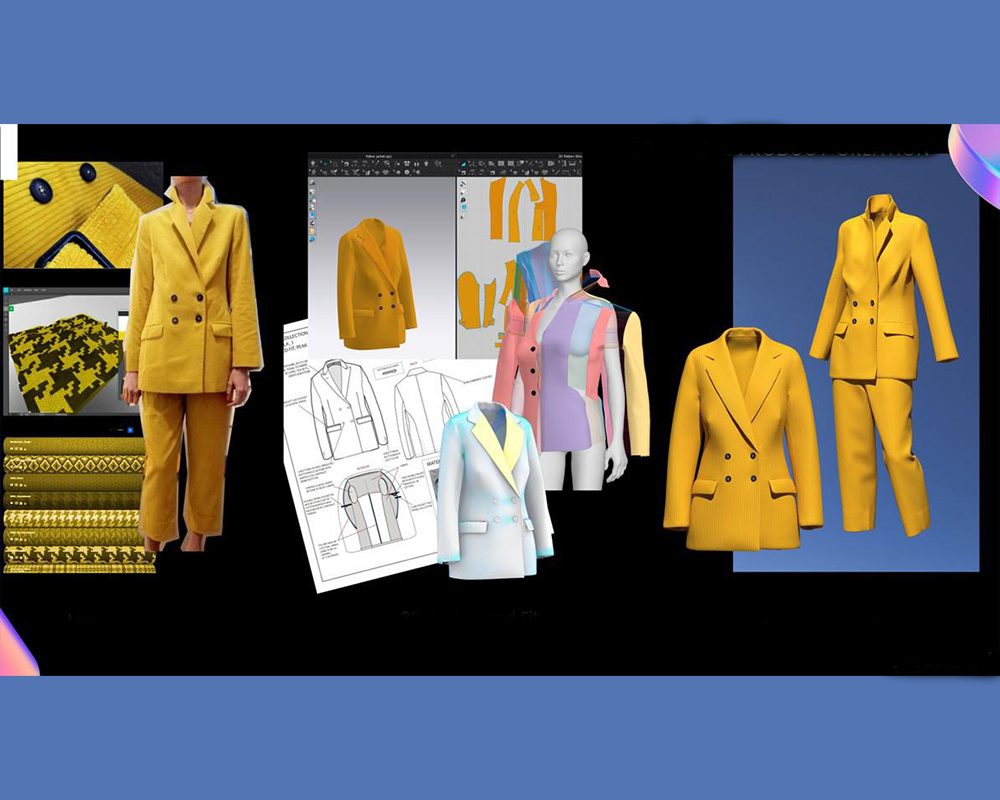The fashion industry has rapidly adopted innovation, from the development of the first sewing machines to the establishment of very effective supply chains and the first forays into e-commerce.
But there has never been more technology in fashion than there is today. Large-scale production lines are being optimized by artificial intelligence, augmented reality is improving customer service, and the virtual world is generating attractive new revenue streams.
The pandemic has sped up the adoption of B2B e-commerce, with forecasts for the industry’s online sales of clothing, accessories, and footwear rising to $18771.4 billion by 2027. Innovations that enable people to shop more wisely, responsibly, and individuals will probably fuel that growth.
The Digital Innovations that Transform the Fashion Industry
Live Streaming
Several intriguing new avenues for brands to interact with potential customers are made possible by social media. This will rise by escalating “live commerce” sales, in which businesses sell directly to consumers through events that are live-streamed on social media. The fad, which is well-liked in China, is anticipated to take up in Western markets in 2022.
Social media can be a useful resource for spotting the next great thing. Many emerging giants have attracted sizable followers on social media by utilizing analytics software to comb through influencers’ and designers’ posts to find the newest trends.
3D printing

Retailers can use 3D printing to personalize their products and develop into the eco-friendly fashion brands that today’s shoppers are looking for. With the use of this technology, complex digital designs can be accurately printed by a machine, reducing the wastage of resources and production errors.
Presently, 3D printing in the fashion industry is mainly used for showpieces; for example, designer Asher Levine has made unique pieces for musicians like Grimes, Lady Gaga, and Lil Nas X.
Internet of Things
The term “Internet of Things” refers to devices that consist of software and sensors that allow them to connect to the internet and share data. Prominent IoT products include “smart” lightbulbs, watches, and doorbells, but the fashion industry is also entering this market.
For instance, by placing trackers in containers, fashion businesses may manage inventory and minimize product loss during delivery. Other retailers, like Amazon and H&M, are experimenting with IoT in the retail space by utilizing “magic mirrors” that let customers browse and try on things via interactive touchscreen displays.
AI Designers and Stylists
Contemporary algorithms are getting stronger, adaptable, and flexible. In particular, AI offers the forthcoming generation of in-store robots the appearance of having intelligence comparable to humans. For instance, the London-based Intelistyle company has introduced an AI-powered stylist who can collaborate with clients and retailers.
For shops, the Artificial Intelligence designer can design different outfits based on a single item to “complete looks.” Moreover, it can suggest substitutes for sold-out items.
The AI suggests styles and outfits to customers based on their body type, skin tone, hair color, and eye color. Clients may access the Artificial Intelligence, and personal stylist from any device, enabling seamless switching between online and offline shopping.
Digital Runways

The industry is considering digital environments due to COVID-19 and the global cancellation of fashion shows.
Tokyo Fashion Week rethought its runway show during the early stages of the outbreak by airing idea presentations online without a live audience. Several cities have adopted technology in response to Tokyo’s initiative to reach its new “stay-at-home” demographic.
The endless pandemic is also reshaping a number of other events that accompany the major fashion weeks. For instance, LFW designer showrooms are now digitalized, and trade shows have been revived as live online events.
Closing Note:
In order to have lasting appeal and commercial value, fashion must innovate. It is essential to how the firms develop the sector after the COVID-19 crisis. Fashion innovation offers sustainable alternatives to wasteful materials. It may put an end to risky, repetitive, and low-paying human work.
People shall be able to engage and function in a digital world owing to innovative clothing, a world with connected objects, smart houses, and driverless vehicles. There is no turning back to pre-pandemic style, at least not if we want fashion to be current.
Fashion innovation, progress, and adoption are the only ways to move forward.




